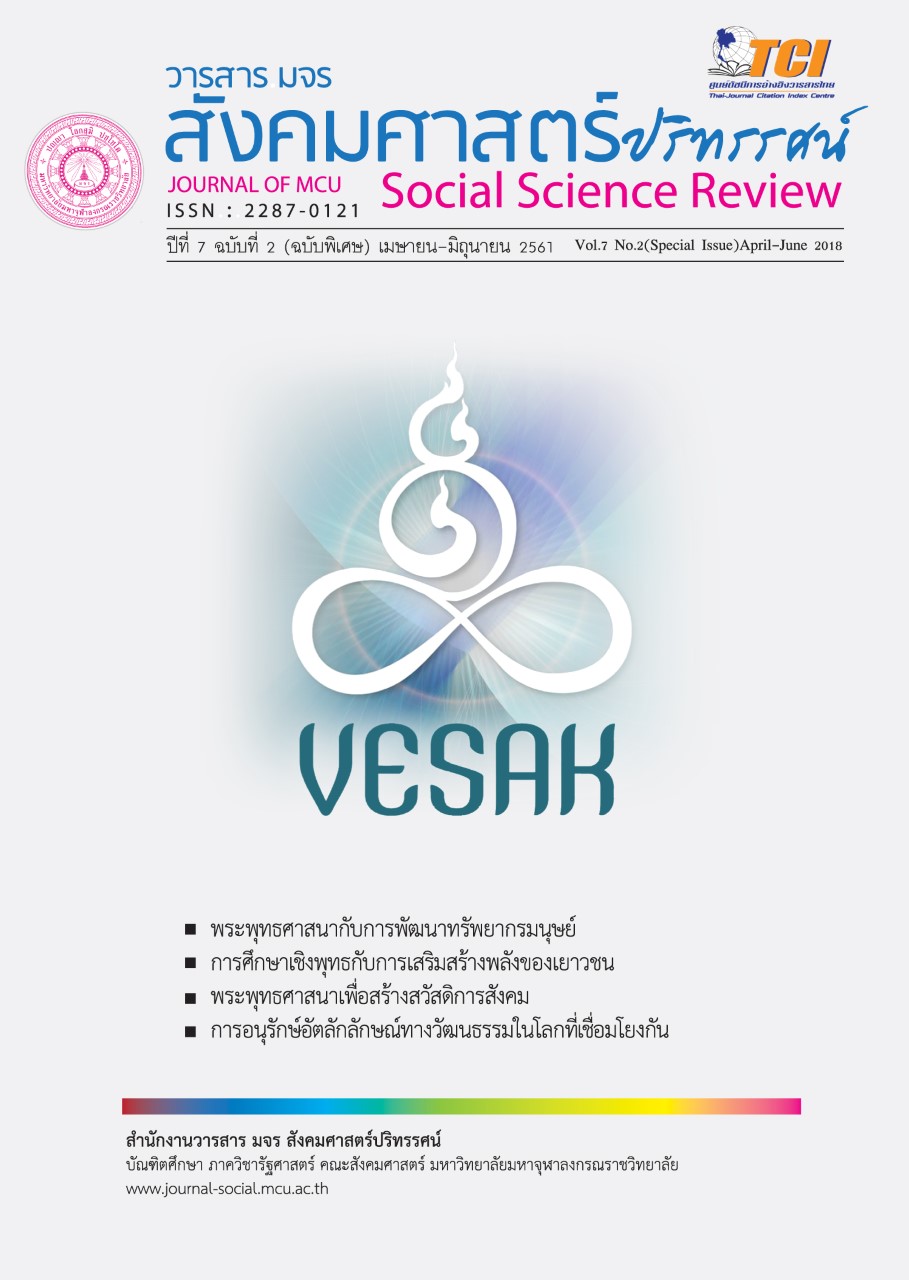PERCEPTION IN KATHĀVATTHU
คำสำคัญ:
Kathāvatthu, Perception, Indriyayāna, Manovinyāna, Svasaṃvedanā, Yogic Intuitionบทคัดย่อ
The purpose of this article was to study perception in Kathāvatthu. Methodology of study began with the collection, classification, analysis, synthesizes and summarize for the purpose. The study found that the perception in Kathāvatthu is beginning to contact of aggregate, namely, if perception occurs when the internal aggregate – eye, ear, nose, tongue, body and mind-impression contact to external aggregate – visible object, sound, smell, taste, touch, and mind-objects. There is contact between internal aggregate – sense organs and external sense – the objects and sending information to consciousness and conduct to meaning. There are four perception in Kathāvatthu 1) Indriyayāna–sense impression,
2) Manovinyāna–mind impression 3) Svasaṃvedanā– self- knowledge of the mind and 4) Yogic Intuition– the knowledge of ascetic yogi.
เอกสารอ้างอิง
David J. Kalupahana. (2011). A History of Buddhist Philosophy. Delhi: Motilal Banarsidass Publishers Private Limited.
Georges B.J. Dreyfus. (1997). Recognizing Reality: Dharmakirti’s Philosophy and Its Tibetan Interpretation. New York: State University Press.
Homhuan Buarabha. (2001). The Buddhist theories of perception(with special reference to Dharmakirtri’s Nyayabindu. (Doctoral Dissertation) Kurukshetra University.
________________ (2006). Logic : Theory of Knowledge in Theravada Buddhist Philosophy. Journal of Philosophy. Khon Kaen: Khangnanadhama Publishing. 111–153.
Mahachulalongkornrajvidyalaya Tipitaka. Volume 37. Bangkok: Mahachulalongkornrajvidyalaya University Press.
Phradhammapidok.(P.A. Payutto). (2000). Dictionary of Buddhism. 9th ed. Bangkok: Mahachulalongkornrajvidyalaya University
Press
Satihs chandra Vidyabhusan. (1988). A History of Indian Logic. Delhi: Motilal Banarssidass Publishers Private Limited.
Stcherbatsky, TH. (1994). Buddhist Logic. Delhi: Motilal Banarssidass Publishers Private Limited.
ดาวน์โหลด
รูปแบบการอ้างอิง
ฉบับ
ประเภทบทความ
สัญญาอนุญาต
ลิขสิทธิ์ (c) 2020 วารสาร มจร สังคมศาสตร์ปริทรรศน์

อนุญาตภายใต้เงื่อนไข Creative Commons Attribution-NonCommercial-NoDerivatives 4.0 International License.
เพื่อให้เป็นไปตามกฎหมายลิขสิทธิ์ ผู้นิพนธ์ทุกท่านต้องลงลายมือชื่อในแบบฟอร์มใบมอบลิขสิทธิ์บทความให้แก่วารสารฯ พร้อมกับบทความต้นฉบับที่ได้แก้ไขครั้งสุดท้าย นอกจากนี้ ผู้นิพนธ์ทุกท่านต้องยืนยันว่าบทความต้นฉบับที่ส่งมาตีพิมพ์นั้น ได้ส่งมาตีพิมพ์เฉพาะในวารสาร มจร สังคมศาสตร์ปริทรรศน์ เพียงแห่งเดียวเท่านั้น หากมีการใช้ภาพหรือตารางหรือเนื้อหาอื่นๆ ของผู้นิพนธ์อื่นที่ปรากฏในสิ่งตีพิมพ์อื่นมาแล้ว ผู้นิพนธ์ต้องขออนุญาตเจ้าของลิขสิทธิ์ก่อน พร้อมทั้งแสดงหนังสือที่ได้รับการยินยอมต่อบรรณาธิการ ก่อนที่บทความจะได้รับการตีพิมพ์ หากไม่เป็นไปตามข้อกำหนดเบื้องต้น ทางวารสารจะถอดบทความของท่านออกโดยไม่มีข้อยกเว้นใดๆ ทั้งสิ้น





